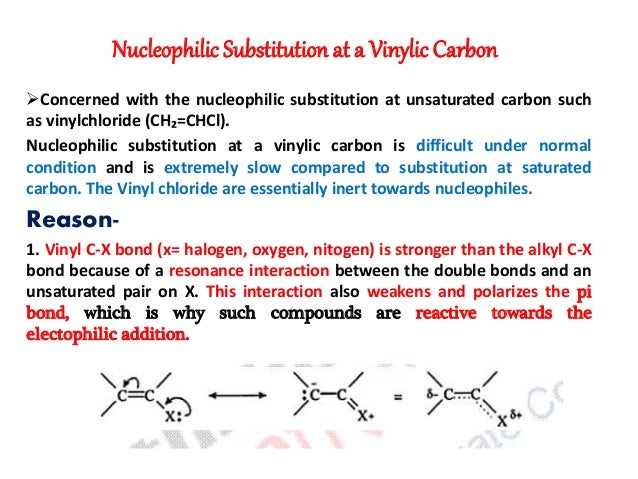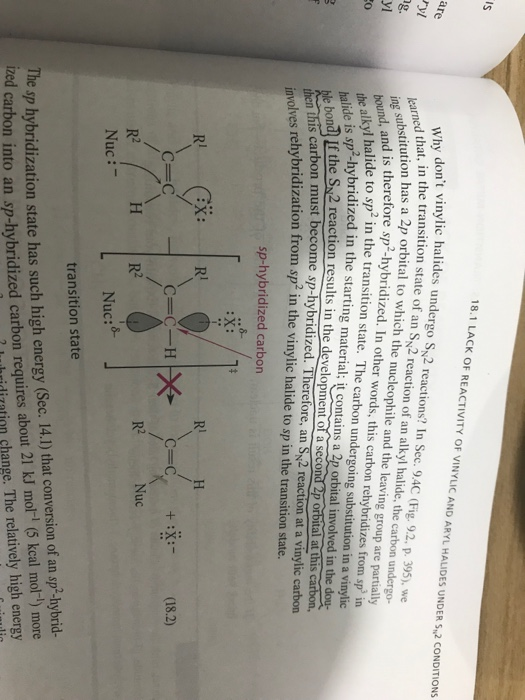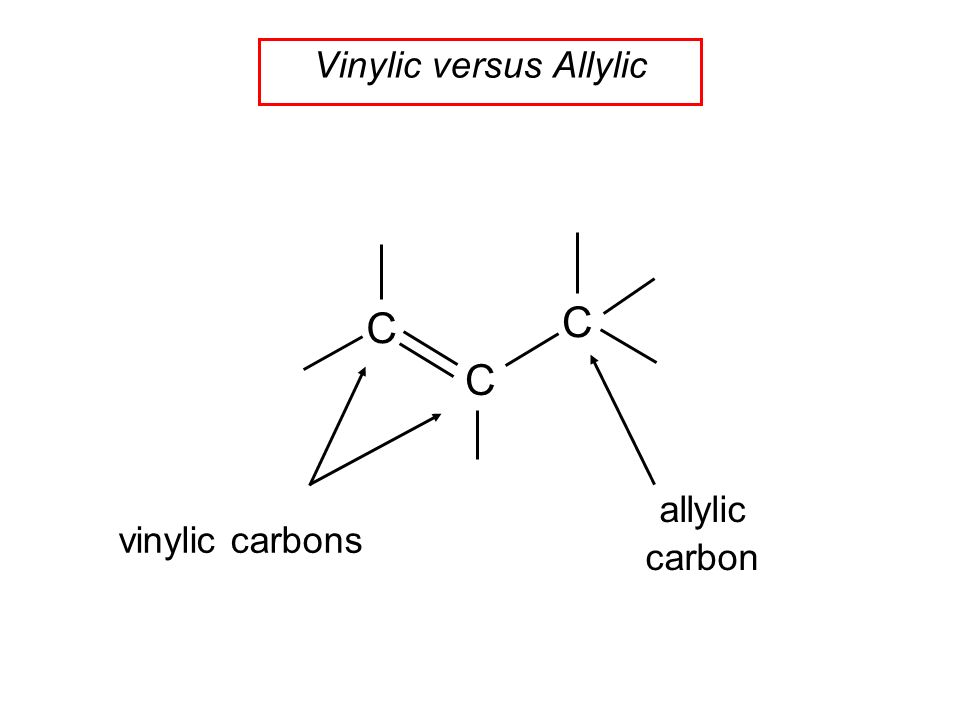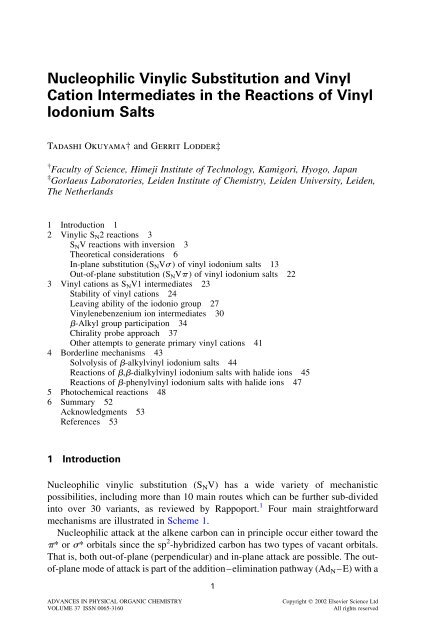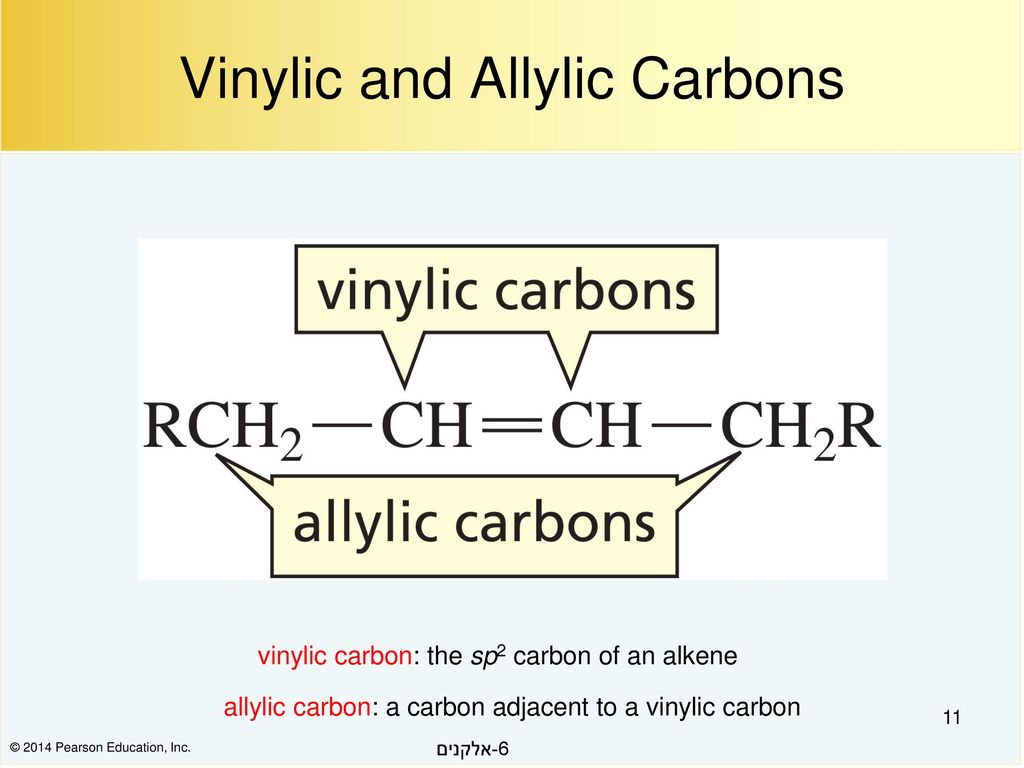Substitution At Vinylic Carbon

In this mechanism one bond is broken and one bond is formed synchronously.
Substitution at vinylic carbon. Introduction the addition elimination route is the most studied one in scheme 1. Journal of the american chemical society 2000 122 10 2294 2299. Key difference allylic vs vinylic carbons functional groups are very important in understanding the different physical and chemical properties of organic molecules the terms allylic and vinyl carbons indicate whether the carbon atom is bonded directly or indirectly to a double bond in a molecule. Since it involves a reaction of the nucleophile with the vinylic carbon atom it is also the one which in actual fact is most correctly described as a nucleophilic vinylic substitution.
Hughes and sir christopher ingold studied nucleophilic substitution reactions of alkyl halides and related compounds. Chemistry 5 organicchemistry ii 17 nucleophilic substitution at an allylic aliphatic trigonal and s ni reactions and nucleophilic substitution at a vinylic carbon reactivity effects of substrate. The two main mechanisms are the s n 1 reaction and the s n 2 reaction. 1989 54 5 998 1000.
1 for such a concerted bimolecular nucleophilic substitution at a vinylic sp 2 carbon are proposed two possible mechanisms namely in plane. Nucleophilic substitution at unactivated vinylic carbon. Nucleophilic substitution at a vinylic carbon 252 is difficult see sec. In 1935 edward d.
It is encountered in nucleophilic substitution. The vinyl chloride are essentially inert towards nucleophiles. They proposed that there were two main mechanisms at work both of them competing with each other. S stands for chemical substitution n stands for nucleophilic and the number represents.
The most common mechanisms are the tetrahedral mechanism and the closely related addition elimination mechanism. Vinyl c x bond x halogen oxygen nitogen is stronger than the alkyl c x bond because of a resonance interaction. This explains the product distribution or. S n2 s n2 is a type of reaction mechanism that is common in organic chemistry.
The key difference between allylic and vinylic carbon is that allylic carbon is the carbon. 10 g i but many examples are known. In reaction conditions that favor a s n 1 reaction mechanism the intermediate is a carbocation for which several resonance structures are possible. Factors conducive to the energetic preference for the in plane sn2 pathway.
An unprecedented intramolecular migration of carbon groups from aluminum to an adjacent vinylic center and its application to the synthesis of stereodefined olefins joseph a. Concerted nucleophilic substitution at an sp 3 carbon typically bimolecular nucleophilic substitution s n 2 reaction is one of the most fundamental reactions in organic chemistry giving a substitution product with inversion of the configuration.

